We tell what plaster to choose for the bathroom and how to prepare a wall under lining with tiles.
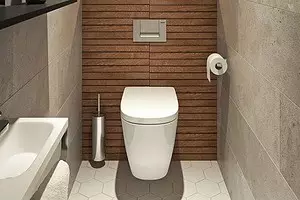
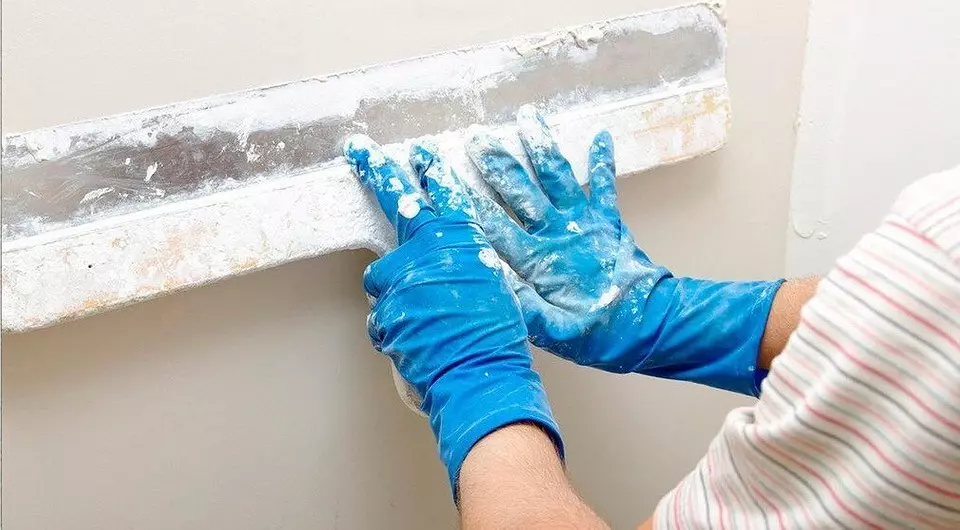
All about plaster materials under the lining of the bathroom
Bathroom repair featuresWhen you need to plaster
Is it possible to lay a cladding
Types of mixes for bathrooms
- Cement
- Gypsum
Bathroom repair features
The bathroom refers to premises with complex operating conditions. There are constantly significant differences in temperature and humidity. Not every building material will endure such an impact. One of them is a ceramic facing. It will last for a very long time that it will be laid on a proper basis. Therefore, it is important to know than plastering the walls under the tile in the bathroom.
The first mixture in the store is unlikely to suit. After all, it must answer a number of requirements:
- Resistance to long-term exposure to moisture and its vapor.
- No conditions for the development of mold and fungus.
- Environmentally friendly, that is, safety for human health.
- Resistance to regular temperature differences.
A good mix combines all these properties. In addition, high adhesion to the base material is important. Otherwise, the composition simply will not hold on the wall.
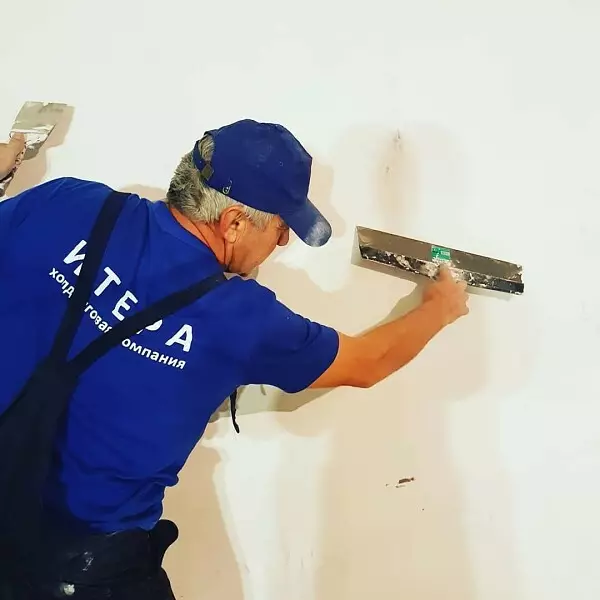
Stucco for walls should be moisture resistant. In addition, high adhesion to the base material is important.
-->When the walls need to plaster
The masts of the finishers know exactly that the base under the tile must be even, without significant drops. Whereas, any surface without noticeable defects may seem like non-specialists. It should be understood that even if the walls are plastered or made from externally even concrete slabs, this does not mean that they are ready for facing.
Mass construction with machine plaster does not involve surface alignment. There are no beacons, and therefore, height drops can reach several tens of millimeters. This is a lot and will be very noticeable, for example, in the corners, in which the facing or on the sections of the edge of the bath and the wall are simply "cannot be found.
Concrete slabs rarely exhibited strictly vertically. Completely, they are "littered" at least 10-20 mm. According to construction standards, this is a completely permissible error, but for finishing it is too much. Thus, it turns out that the alignment is necessary. To make sure that it is enough to carry out measurements, applying a long rule to the bottom. If the differences are greater than 2-3 mm for each running meter, you will have to show the surface before gluing the tile on it.
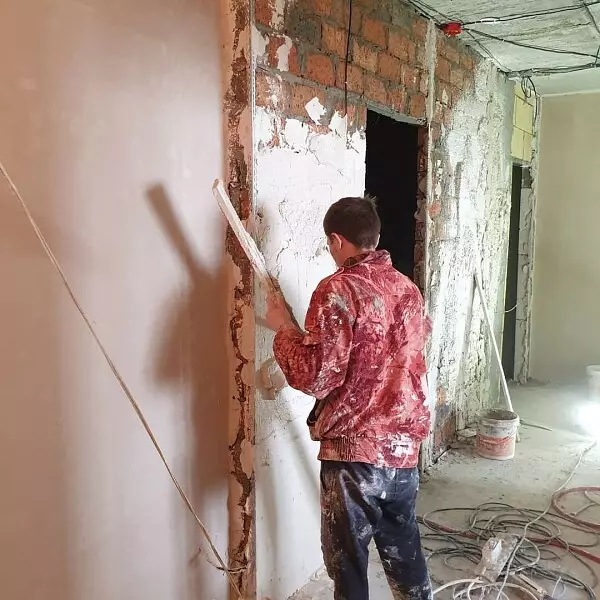
Machine plaster does not imply perfect alignment, so you need to cook the wall under the tile
-->Sometimes you can hear that the irregularities of the base can be leveled with tiled glue. Indeed, adjusting the thickness of the solution layer can be aligned with the basis. But it is worth doing only for very minor drops. First, the alignment of glue increases its consumption, and this is not suiced. Secondly, the cladding laid on the thick layer of the tiled mixture will "swim" and keep sufficiently firmly. It is probability that it quickly falls off.
Is it possible to put the tile on the plaster
For high-quality alignment of its surface, it is best to plaster, picking up the appropriate composition. But it is not necessary to put the putty, since there are no minor discs that it removes, levels the tile glue. In some cases, the walls were once already aligned and, despite the fact that the stucco is old, the result is preserved. There may be doubts whether it is worth facing such a base.
First of all, you should carefully inspect the coating and evaluate its condition. It is best to take a hammer and ticker to catch a wall. A ringing sound will indicate the normal state of the base, deaf testifies to the availability of voids. At such sites, the plaster is removed. Clean her and where she crumbs and cracks. All defects are neatly closed with a suitable solution.
Somewhat more complicated if the plastered wall is painted. It is not worth putting the tile on the paint, the grip will be very bad. Optimally remove the colorful layer, but this is a very laborious process. You can do as follows: Apply notches that will significantly improve adhesion. Make them at a short distance one from the other. Similarly come with an unpainted smooth base, if they want the facing to keep long.
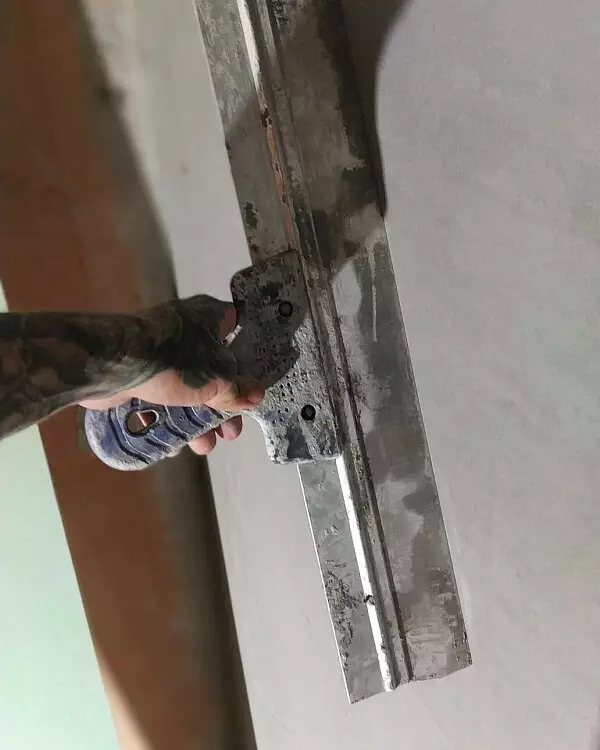
Insufficiently smooth wall need to be prepared under the tile. All defects are neatly closed with a suitable solution.
-->What plaster use in the bathroom under the tile
There are only two types of plaster materials separated by the type of binder: cement and gypsum. Consider both options in detail.Cement mixes
The basis becomes white cement or Portland cement. As a filler is used quartz sand of different graininess. What it is higher, the big irregularities will be able to close the material even with a one-time applix. True, the surface will turn out to be more rough. But for subsequent trim, it is not a disadvantage. In addition, plasticizers are included in the composition.
Materials are issued with the addition of lime. It gives an antibacterial effect and reduces the weight of the finished coating. We list the advantages of cement solutions:
- High strength, resistance to mechanical damage.
- Durability. Properly laid coating serves decades.
- High adhesion to most reasons. The mass is enough plastic, fills small irregularities, well keeps and falls into a smooth layer.
- Resistance to temperature differences.
- Low cost. The possibility of self-making.
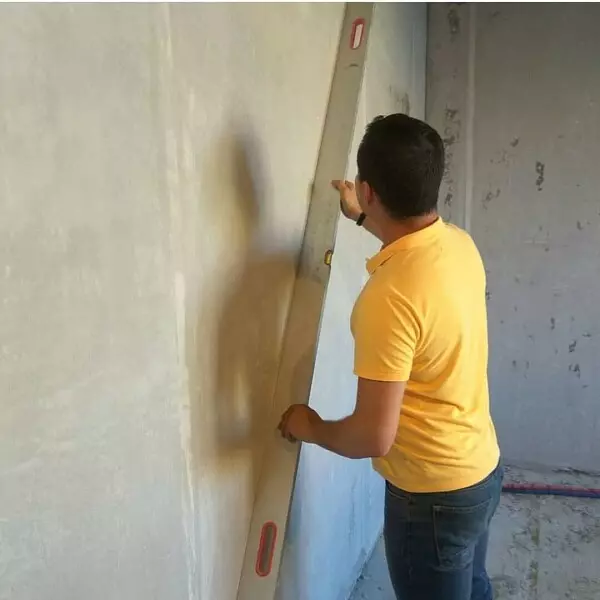
Cement plaster allows you to level significant irregularities / also it is resistant to temperature differences
-->Solutions with cement, perhaps the best choice for wet rooms. However, it is necessary to take into account that they have significant drawbacks. First of all, this is a significant weight. The hardened material gives a serious additional burden on the design, especially if it is applied with a thick layer. Such plaster is quite complex in montage. It is little plastic, so the laying requires certain skills.
For the same reason, after drying, the solution is seated. If its layer is small, cracks may appear. Another minus is almost a complete absence of grip with paint and wood. Plastering cement such bases without prior preparation is impossible. Save the coating for a long time. The opening time depends on many factors: the moisture content of the base, layer thickness, etc. In order not to spoil the work, you need to leave the plaster to dry the minimum one day.
Gypsum Material
Used as a binder gypsum - a natural substance with high hygroscopicity. Therefore, around the use of such mixtures for rooms with high humidity is much arguing. Indeed, if you put standard plaster plaster in the bathroom under the tile of consequences can be the most unpleasant.
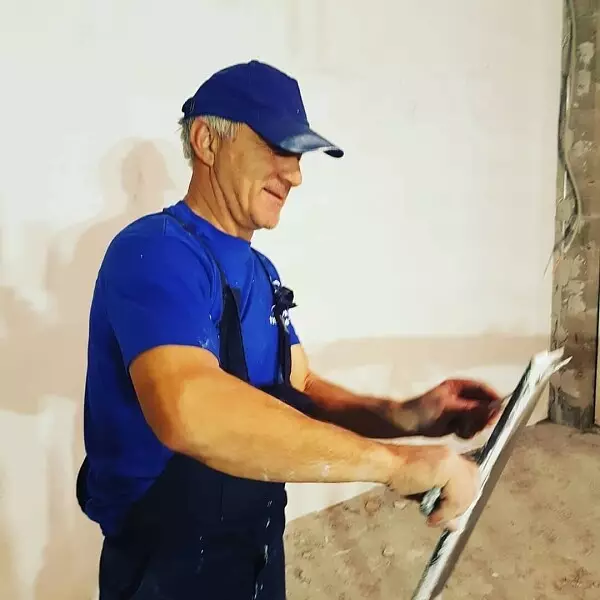
Laying plaster stucco is easier than cement. Even inexperienced plasterers will cope with work
-->Some masters claim that if we properly put in the bathroom to the walls and the floor, install a tension or suspended ceiling, then you can plaster with plaster. This is explained by the fact that the lighted seams are sealed and lazes for water are absent. Consequently, the moisture will not get to the gypsum, and the finish is safely just for many years.
In fact, everything is not so safe. Even a small crack or any flaw, which will inevitably appear during operation, will become a "gate" for water. Gypsum absorbs her very actively. Wet areas will only grow, gradually destroying the cladding. Double mixing of walls with special solutions will not help either. And if in such conditions there will be a leak from the neighbors from above, it will become a real catastrophe.
Therefore, it is necessary to understand that if you want to choose a plaster, then it should be only a waterproof plaster for the bathroom under the tile. It includes decreasing hygroscopicity special additives. Of course, it does not give a complete guarantee of the lack of problems, but significantly increases the water resistance of the material. The choice of gypsum mixture is due to its advantages:
- High plasticity and complete no shrinkage.
- Low weight, so does not create a load on the design.
- Easy to apply. Even inexperienced plasterers will cope with work. As a result, it turns out smoother than that of cement mortar, the surface.
- High rejection rate. Even the thick layer will take the necessary strength no longer than a week. For this reason, the timing of repair work is significantly reduced.
From the disadvantages of the material you need to mention a little strength. It is not desirable to expose it to mechanical effects. The mixture is quickly seized, so it is necessary to prepare it with small portions immediately before starting to stucify. The cost of plaster mixes compared to cement is significantly higher, so the finish will turn out to be more expensive.
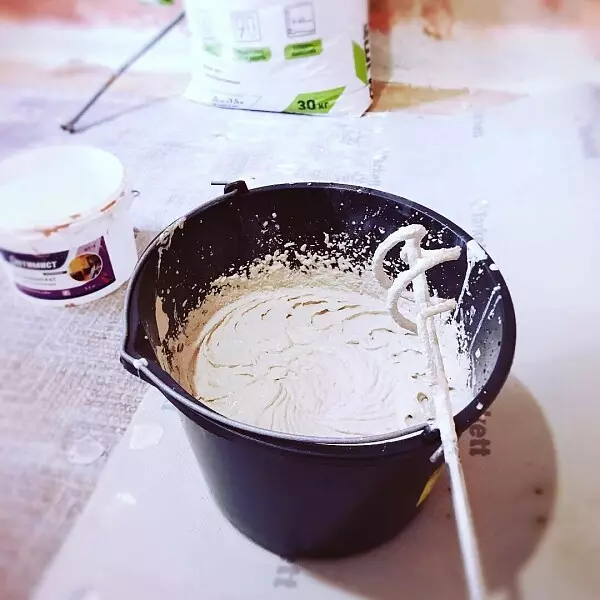
For the bathroom, only moisture-resistant plaster plaster is chosen
-->It is unambiguously replied to which makeup to choose for the bathroom difficult. This can only solve its owner, the correlation of the funds you like with real operating conditions. Somewhere the best choice will be a robust cement mixture, and somewhere quite suitable in the application of the gypsum. The latter need to choose only in the moisture-proof version, otherwise the consequences will be extremely unpleasant.

